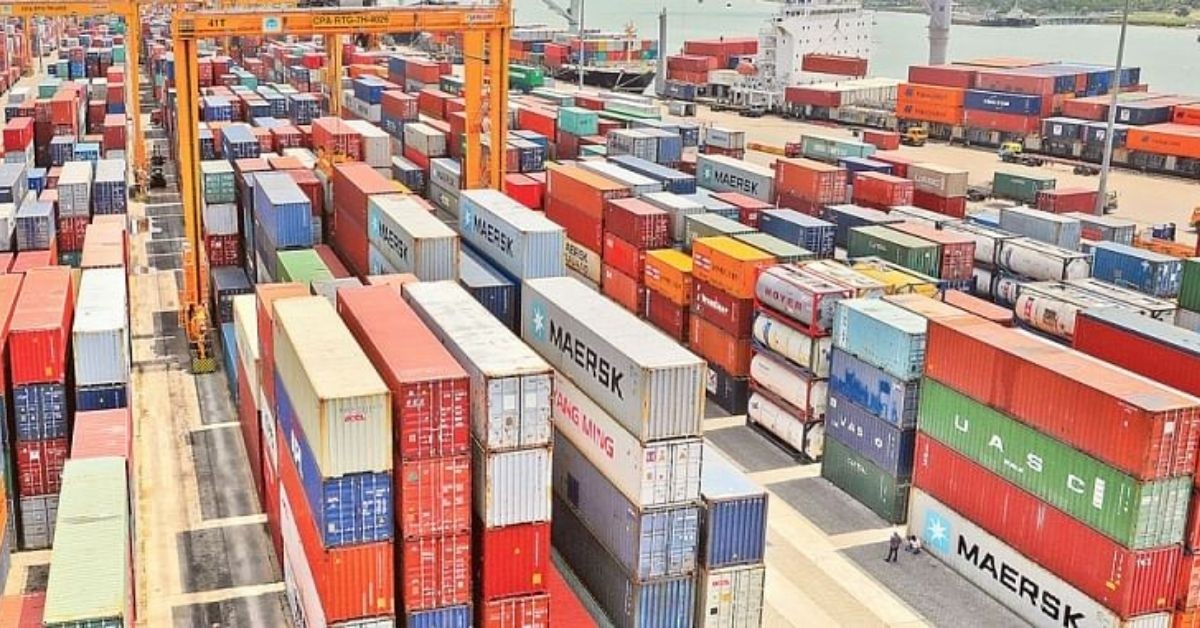In June last year, after a decade, two local vessels began carrying container shipments for import and exporting. This proved to be a success and this year four new vessels carrying the national flag will take to the sea.
The present two vessels are owned by Karnaphuli Limited and operated by its subsidiary company HR Lines.
Since inception, these two ships have carried 660, 396 units of containers at the first eight months of the 2020-21 fiscal. This brought in revenue of USD12 million, equivalent to around Tk 1 billion in local currency, for Karnaphuli Ltd. This is adding to the export income of the sea cargo transport service sector.
Managing director (MD) of HR Lines and the director of Karnaphuli Limited Raimah Chowdhury said transporting huge numbers of containers on local vessels after a decade, is a great achievement for the country. This also means employment for local sailors.
As these are domestic vessels, these can arrive and leave the port on schedule. This means garment exporters will be able to ship their products on on schedule, ensuring buyers are receive their consignment on time.
QC Container Line and HRC Shipping were the first to invest in container shipment. These two companies started by procuring container-carrying vessels between 1996 and 1998.
At that time, only around 300,000 to 400,000 containers were transported annually and this was inadequate to survive in the global competition. QC withdrew its investment from this sector in 2007 while the HRC pulled out three years later in 2010.
Since then, the domestic fleet carried only goods and oil. However, after a decade, with the increase of container transport, HR Lines floated two more vessels in the sea in June last year.
These ships carrying cargo containers are being operated from Chattogram to Singapore Port and Kelang Port in Malaysia. With these two ships, HR Lines is now competing with 84 container ships from 22 foreign companies (feeder operators).
This year, the Karnaphuli Group is going to add two more carriers to their fleet, following last year’s success. Now these two vessels ships are in the outer anchorage will operate from Chattogram to Colombo port in Sri Lanka.
The two ships are scheduled to start operations next month. Besides, two more ships will take to the sea by next August. The group is investing Tk 2.25 billion in these four new ships. The group’s total investment in this sector, including the previous one, will stand at Tk 3.35 billion.
Another director of Karnaphuli Groupm Hamdan Hossain Chowdhury, told Prothom Alo that “The more national flag carrying vessels will increase in the sea, the more the country will be benefitted. Around four per cent of container shipments through Chattogram port are being operated by these two local ships. Increasing the rate to 20-30 per cent by two and three years is our main goal.”
According to the port and shipping sector, around 2.5 million containers were transported through the port last year. The average rent for per unit container is USD 180 to USD 200. So, the feeder operators have earned around Tk 40 billion as rent.
Chairman of Chattogram port Rear Admiral M Shahjahan said, as per the ship reservation law, all facilities are being provided to the national flag carrier ships. Newcomers [ships] will also get this benefit too. Every year the number of containers will increase along with the country’s economic growth. Due to this, there is massive opportunity for investment in this sector. If the investment increases, export income will increase and the foreign exchange will be saved.
Large ships carrying export-import products could not anchor in Chattogram port. As a result, Chattogram-bound containers in large vessels have to initially anchor in Singapore, Malaysia and Sri Lanka.
Then the containers are brought to Chattogram port by feeder ship (small-medium size). Similarly, export containers are taken to various countries of the world including Europe and America through the ports of these three countries.
Source : EN Prothomalo







